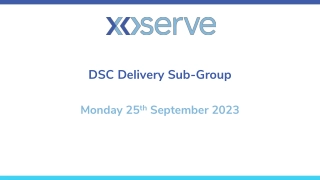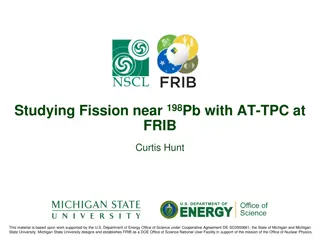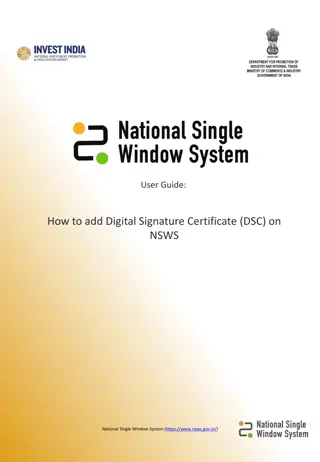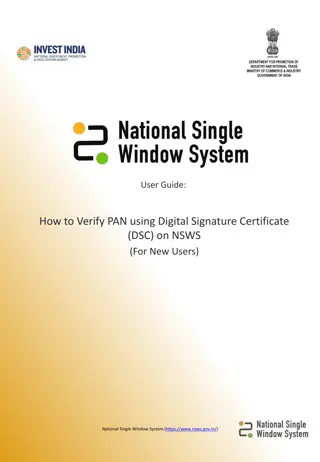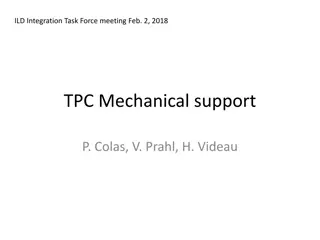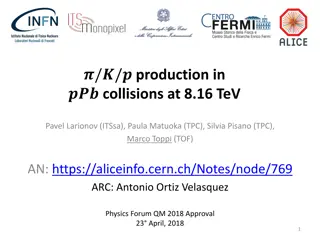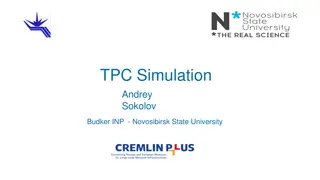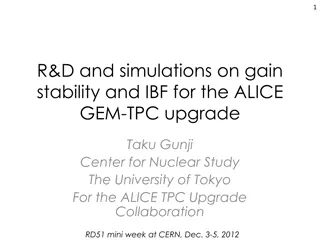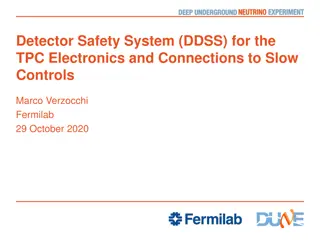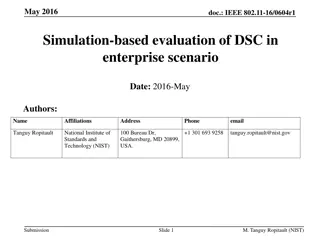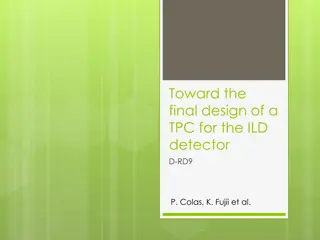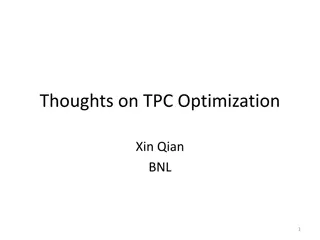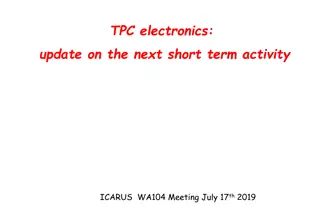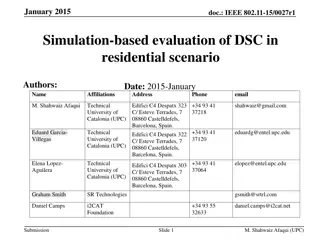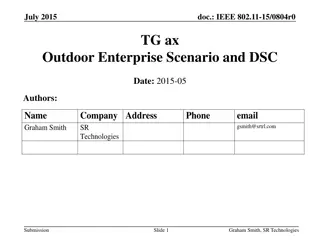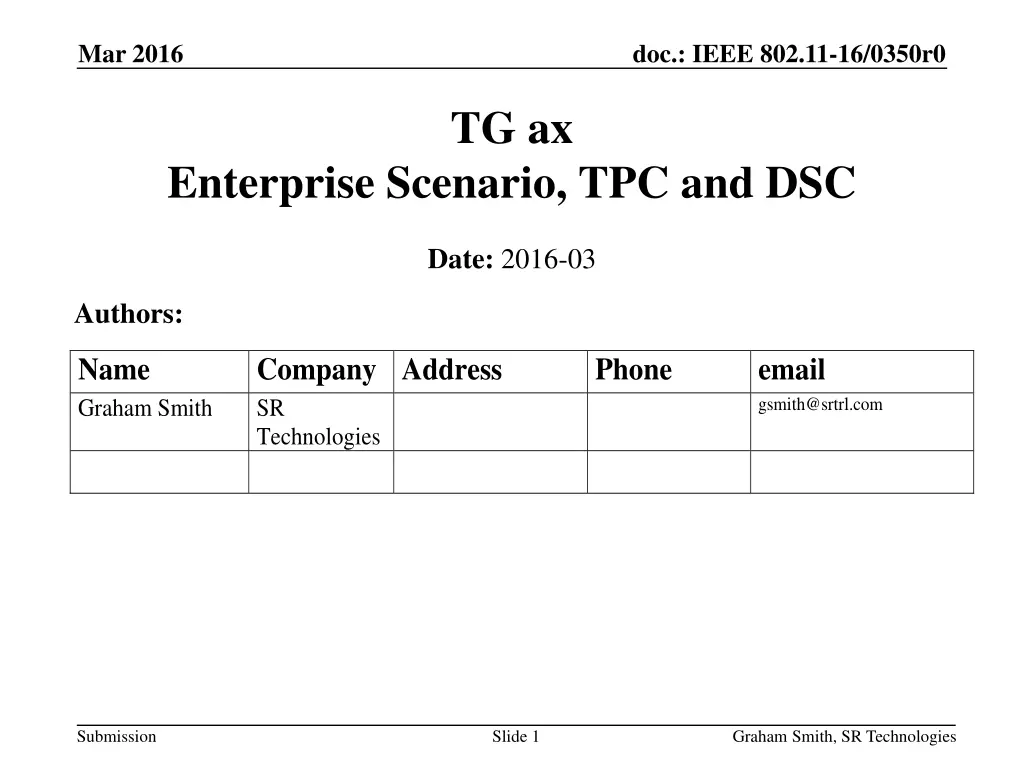
IEEE 802.11-16/0350r0: TPC and DSC for Enterprise Scenario
Explore the implementation of Transmit Power Control (TPC) and Dynamic Sensitivity Control (DSC) in an enterprise scenario for IEEE 802.11. The presentation delves into the impact on spatial reuse and performance optimization for stations in close proximity to access points.
Download Presentation

Please find below an Image/Link to download the presentation.
The content on the website is provided AS IS for your information and personal use only. It may not be sold, licensed, or shared on other websites without obtaining consent from the author. If you encounter any issues during the download, it is possible that the publisher has removed the file from their server.
You are allowed to download the files provided on this website for personal or commercial use, subject to the condition that they are used lawfully. All files are the property of their respective owners.
The content on the website is provided AS IS for your information and personal use only. It may not be sold, licensed, or shared on other websites without obtaining consent from the author.
E N D
Presentation Transcript
Mar 2016 doc.: IEEE 802.11-16/0350r0 TG ax Enterprise Scenario, TPC and DSC Date: 2016-03 Authors: Name Graham Smith Company Address SR Technologies Phone email gsmith@srtrl.com Submission Slide 1 Graham Smith, SR Technologies
Mar 2016 doc.: IEEE 802.11-16/0350r0 Background 15/1609 Adaptive CCA and TPC proposed a TPC scheme where the STA, if close to its AP, reduced its TX power, accompanied with a change in the CCA threshold. 16/0212 Enterprise Scenario with DSC and Color , evaluated the spatial re-use of the Enterprise Scenario. This presentation investigates if TPC improves Spatial Reuse for the Enterprise Scenario. Submission Slide 2 Graham Smith, SR Technologies
Mar 2016 doc.: IEEE 802.11-16/0350r0 An Example of Adaptive CCA/PC Scheme From 15/1609r0 STA s OBSS_PD threshold and transmit power are based on received RSSI (e.g, received RCPI of the beacon or path loss) and constants determined by AP Adjusted_TX_Pwr = TX_Pwrnominal RSSIAP +constant 1 Adjusted_OBSS_PD = OBSS_PDnominal + RSSIAP + constant 2 Limits the OBSS_PD threshold to be -82dBm<Adj_CCA<-62 dBm (Note: OBSS_PD for AP can be set to the value based on the farthest STA.) Less adjustment More adjustment Lower SR, Higher TX PWR Higher SR, Lower TX PWR Submission Slide 3 Graham Smith, SR Technologies
Mar 2016 doc.: IEEE 802.11-16/0350r0 TPC and CCA from 15/1609 Adjusted TX_PWR = 15 RSSI + A Adjusted CCA = -82 + RSSI + B -5<TX_PWR<15 dBm -82<CCA<-62 dBm Assume the STA is close to the AP then RSSImax TX_PWR = 15 (RSSImax A) = -5 Hence, (RSSImax A) = 20 .1) CCA = -82 + RSSImax + B = -62 Hence, (RSSImax + B) = 20 .2) Therefore A = -B so we need only define a single factor, A IF we maintain the 20dB TX_PWR reduction. How do we fix a value for A? Say RSSI = -35dBm (~2m) Then A = -55dB This seems reasonable A = -45dB would set the TX _PWR reduction to 10dB rather than 20. Submission Slide 4 Graham Smith, SR Technologies
Mar 2016 doc.: IEEE 802.11-16/0350r0 CCA Adjusted CCA = -82 + RSSI + B -82<CCA<-62 dBm This is, in fact, DSC Using DSC, CCA= RSSI DSC Margin Therefore -82 + RSSI + B = RSSI DSC Margin DSC Margin = 82 B For B = 62dB and -82<CCA<-62 dBm DSC Margin = 20 dB, and DSC Upper Limit = -42dBm RSSI < DSC Upper Limit Submission Slide 5 Graham Smith, SR Technologies
Mar 2016 doc.: IEEE 802.11-15/1609r0 Enterprise scenario Refer to 16/212r4 Slide 6 Submission
Mar 2016 doc.: IEEE 802.11-16/0350r0 Topography 20m 20m AP Layout 4 channels STAs 20m 29m Submission Slide 7 Graham Smith, SR Technologies
Mar 2016 doc.: IEEE 802.11-16/0350r0 4 Channel re-use and TPC AP to STA -45dBm AP to AP -64dBm STA to STA -77.5dBm ALL STAs and APs are overlapping Set A = -55dB DL AP to furthest STA -45dBm TX-PWR = 15 + 45 -55 = 5dBm (10dB reduction) UL from furthest STA to AP = -48 -10 = -58dBm DL AP to closest STA -37dBm TX-PWR = 15 + 37 -55 = -3dBm (18dB reduction) UL from closest STA to AP = -40 -18 = -58dBm TPC causes the UL RSSI at the AP to be the same for ALL STA, i.e. -58dBm BUT AP to AP interference is -64dBm, ALL UL IS BLOCKED, only 6dB SNIR Submission Slide 8 Graham Smith, SR Technologies
Mar 2016 doc.: IEEE 802.11-16/0350r0 Interference Wanted 64 inter BSS UL STAs 1 inter BSS DL AP Interferes Each of the 64 STAs has 64 potential interfering STAs Total links = 4096 Plus each of 64 STAs has one potential interfering AP (ignoring the, up to three, other OBSS networks) With TPC the TX_PWR is less for the closer STAs But outer STAs still at full power. Wanted UL RSSI is constant but now reduced for most STAs Submission Slide 9 Graham Smith, SR Technologies
Mar 2016 doc.: IEEE 802.11-16/0350r0 TPC 10dB We see that TPC causes all UL RSSI to be the same for all STAs. Using a 20 dB TX_PWR reduction, all UL are Blocked by the other AP DL packets. Let s try to use 10dB TX_PWR reduction, i.e. A = -45dB DL AP to furthest STA -45dBm TX-PWR = 15 + 45 -45 = 15dBm (0dB reduction) UL from furthest STA to AP = -48 = -48dBm DL AP to closest STA -37dBm TX-PWR = 15 + 37 -45 = 7dBm (8dB reduction) UL from closest STA to AP = -40 -8 = -48dBm (TPC causes all UL to be same RSSI) AP to AP interference is -64dBm, SNIR = 16dB, still blocked All UL traffic is blocked by DL traffic in the OBSS. Submission Slide 10 Graham Smith, SR Technologies
Mar 2016 doc.: IEEE 802.11-16/0350r0 Summary for 4 CH - DSC TPC Shadowing STA DL blocked by other STA UL and other AP DL STA 6 10-60 0 0 6 8-70 STA UL blocked by other STA UL and other AP DL STA 88 200-400 256 400-652 256 360-676 dB 0 5 0 5 0 5 AP 2 2-7 2 1-9 2 4-8 AP 36 NO 27-35 64 64 64 61-64 A= -55dB A = -45dB (Note: STA columns represent 4096 possibilities, AP 64 possibilities) Using TPC does not add any significant advantage for Spatial Reuse for the enterprise scenario. Similar results for 20 and 10 dB TX_PWR reduction. Submission Slide 11 Graham Smith, SR Technologies
Mar 2016 doc.: IEEE 802.11-16/0350r0 TPC if Other BSS not TPC TPC Shadowing STA DL blocked by other STA UL and other AP DL STA UL blocked by other STA UL and other AP DL dB STA AP STA AP NO 0 6 2 88 36 5 10-60 2-8 200-400 27-35 A= -55dB 0 0 2 4016 64 5 0 2-8 4016 64 A = -45dB 0 6 2 256 64 5 8-60 4-8 2000-4000 64 Note: Blocked means <20dB SNIR If other BSS not using TPC, then UL results are bad. Submission Slide 12 Graham Smith, SR Technologies
Mar 2016 doc.: IEEE 802.11-16/0350r0 Conclusions With the Enterprise Scenario example, TPC can show some very small improvement for STA DL traffic but worse results for the UL traffic Unless ALL STAs use TPC, total blocking UL occurs. No real incentive for a STA to use TPC. Submission Slide 13 Graham Smith, SR Technologies

